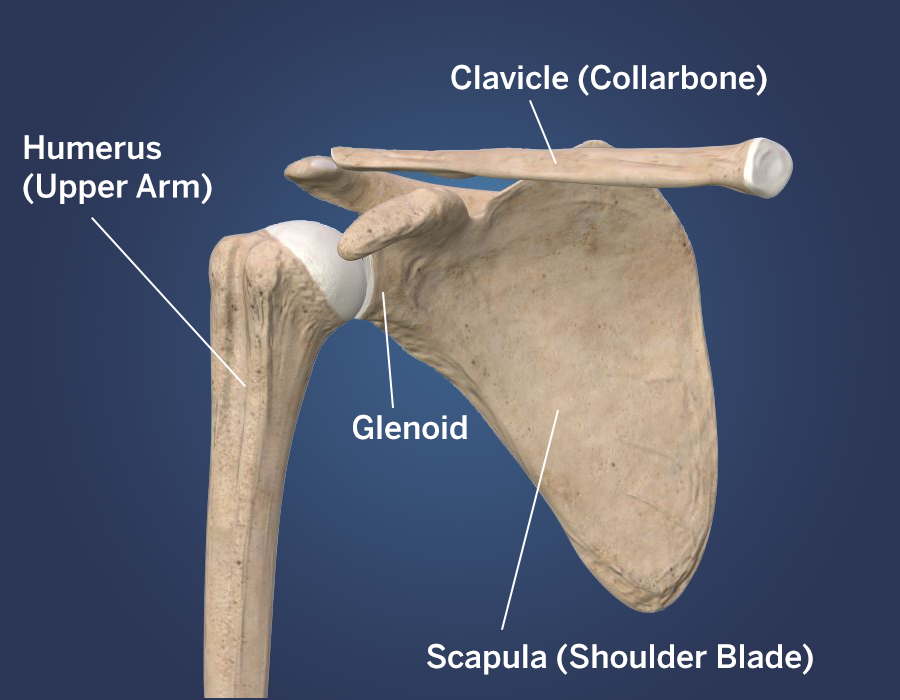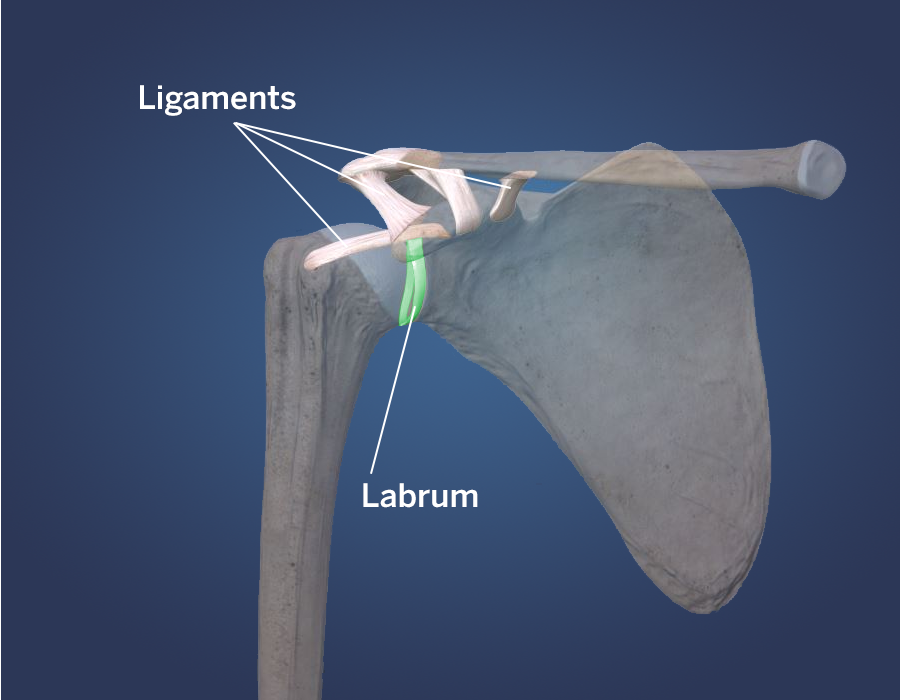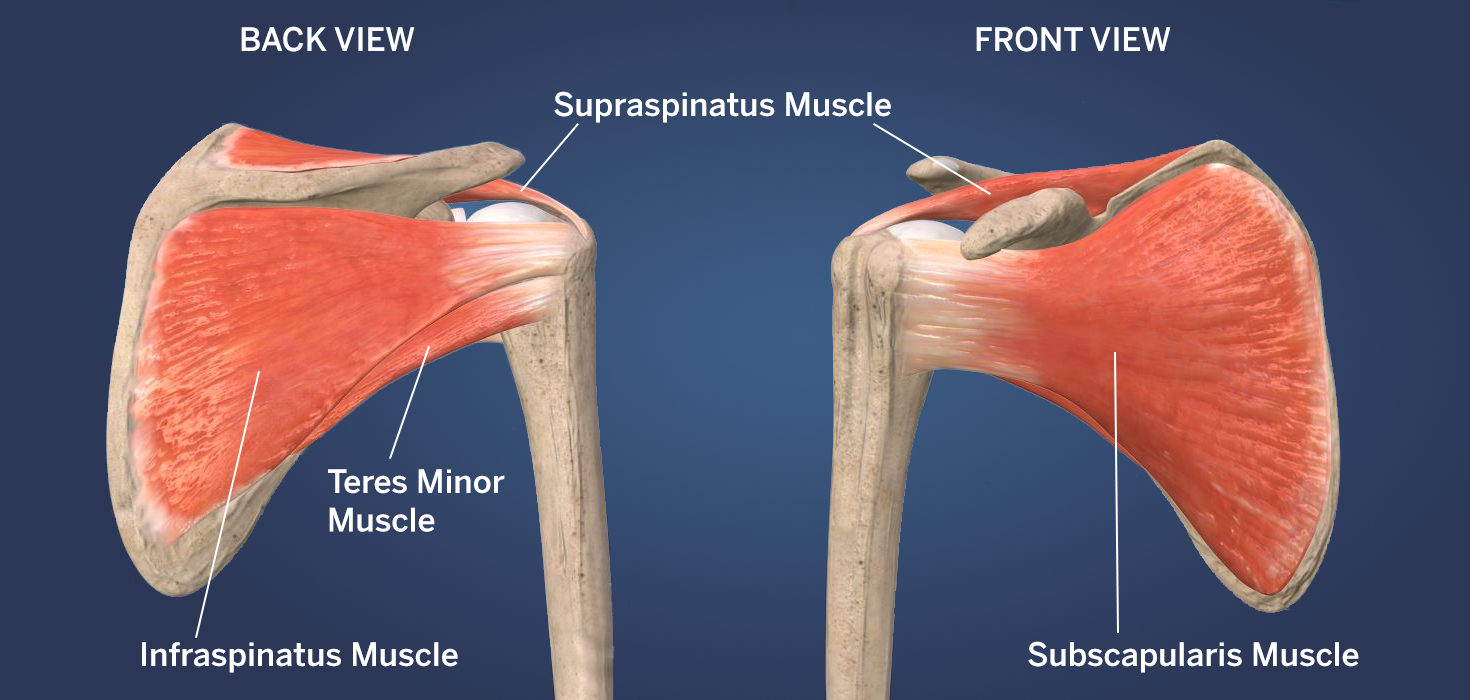Your Shoulder Joint - Surgical Guide to Right Total Shoulder Replacement
The shoulder is oftentimes described as a “ball and socket” joint. The ball is the larger part of the upper arm bone that fits into the small socket of the shoulder blade. This allows the shoulder to provide the wide ROM – range of motion required to perform overhead movement to complete functional tasks in many directions.
The shoulder is made up of 3 bones; the humerus, scapula, and clavicle. The head of the humerus is known as the “ball.” The scapula is known as the shoulder blade; and its outer part, the glenoid, is the “socket.” The clavicle is the collar bone. (See Fig. 1)

Fig. 1: Anatomy of humerus, glenoid, scapula, and clavicle
The labrum is a rim of cartilage on the socket that helps stabilize the joint. (See Fig. 2) Ligaments connect bone to bone and also provide stability. Tendons attach muscle to bones, the muscle themselves initiate and control the position and activity of the shoulder joint.

Fig. 2: Shoulder labrum denoted in green
The large muscles which attach to the shoulder blade a significant role in the normal function of the shoulder. These four muscles include subscapularis, supraspinatus, infraspinatus and teres minor, are known as the rotator cuff muscles. (See Fig. 3)

Fig. 3: Anatomy of rotator cuff muscles
The shoulder joint is very complex and injuries and conditions are too numerous to explain. Your physician will explain your condition and the options for treatment.
